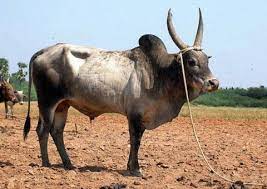Today’s Current Affairs: 20th Jan 2024 for UPSC IAS exams, State PSC exams, SSC CGL, State SSC, RRB, Railways, Banking Exam & IBPS, etc
Table of Contents
Universal Service Obligation Fund:

Telecom service providers have urged the Ministry of Finance to suspend the universal service obligation fund (USOF) levy until the existing corpus is exhausted.
- USOF was set up by an Act of Parliament in December 2003 by amending the Indian Telegraph Act, 1885.
- The objective of the USOF is to provide access to telecom services in a non-discriminatory manner to people in rural and remote areas at affordable and reasonable prices, thereby bridging the rural-urban digital divide.
- For commercially non-viable rural and remote areas, USOF provides subsidy support in the form of Net Cost or Viability Gap Funding (VGF) to incentivize telecom service providers for the expansion of telecommunications and broadband services in those areas.
- USOF is headed by the Administrator, USO Fund who is appointed by the Central Government, for the administration of the fund.
- It is an attached office of the Department of Telecommunications (DoT), Ministry of Communications.
Isopod : Discovered

An international team of marine biologists recently discovered a unique isopod, a form of crustacean, that has been formally identified as a new species of the genus Booralana.
- Isopods are an order of invertebrates (animals without backbones) that belong to the greater crustacean group of animals, which includes crabs and shrimp.
- Scientists estimate that there are around 10,000 species of isopods (all belonging to the order “Isopoda”).
- They also live in many different types of habitats, from mountains and deserts to the deep sea, and they are distributed worldwide.
- They are one of the most morphologically diverse of all the crustacean groups, coming in many different shapes and sizes and ranging from micrometres to a half-metre in length.
- Isopods often do not look alike, but they do have common features. For example, all isopods have two pairs of antennae, compound eyes, and four sets of jaws.
- The body of all isopods consists of seven segments, each with its own pair of walking legs.
- Isopods have a short abdominal section composed of six segments, called “pleons,” and one or more of these segments is fused into a tail section.
Pulikulam Cattle Breed:

Interest in indigenous cattle breeds like the Pulikulam is reviving which is famous for a local game called Jallikattu in Tamilnadu.
- Pulikulam Cattle breed is a popular draught and game breed of Tamil Nadu.
- The cattle originated from Pulikulam; a village located in Sivaganga district of Tamil Nadu.
- It is also known as Palingu maadu, Mani maadu, Jallikattu maadu, Mattu maadu and Kilakattu maadu.
- These are maintained as migratory herds, and its draught and manure capabilities play a significant role in the rural livelihood of the communities rearing them for draught and organic agricultural production.
- This breed of cattle is famous for a local game called Jallikattu where bulls are used as a bull-taming sport.
- Pulikulam / Alambadi bulls are dark grey, almost black and cows grey or white.
Guruvayur Temple : Prime Minister Visit

The Prime Minister, who is on a two-day visit to Kerala, offered prayers at Sreekrishna Temple, Guruvayur, recently.
- Guruvayoor Sree Krishna Swamy Temple, also known as the Dwarka of the South, is dedicated to Lord Vishnu and the young form of Lord Krishna.
- It is located in the small town of Guruvayur, in the Thrissur District of Kerala.
- The earliest temple records date back to the 17th century, but other literary texts and legends indicate that the temple may be around 5000 years old.
- Lord Krishna, or Guruvayoorappan, is the chief deity of this temple.
- The temple is built in the traditional Kerala architectural style.
- The central shrine is believed to have been rebuilt in 1638 C.E.
- The wall of the sanctum sanctorum is decked with ancient 17th-century murals.
- One of the most popular offerings at Guruvayoor temple is Thulabharam, where devotees are weighed against bananas, sugar, jaggery, and coconuts equivalent to their weight on a giant pair of scales.
Heritage Corridor Around The Jagannath Temple:

The Chief Minister of Odisha unveiled a sprawling heritage corridor around the Jagannath Temple in Puri.
- Jagannath Temple is located in Puri, Odisha.
- It is one of the most famous and sacred Hindu temples in the world.
- It is dedicated to Lord Jagannath, a form of the Hindu deity Vishnu.
- It is believed to have been built during the reign of King Anantavarman Chodaganga Deva, of the Eastern Ganga dynasty, in the 12th century.
- The Jagannath Temple is a striking example of Kalinga architecture, a distinct style prevalent in the Odisha region.
- The temple’s main structure, the sanctum sanctorum, or the garbhagriha, houses the idols of Lord Jagannath, Balabhadra, and Subhadra.
- Ratha Yatra is a Hindu festival associated with Lord Jagannath held at Puri in Odisha.
- The most famous Rath Yatra festival begins on the second day of the bright half of the lunar month of Ashadha (June–July) and lasts for nine days.
Soil-Powered Fuel Cell:

A team from Northwestern University has developed a soil-powered fuel cell that harvests energy from microbes in the soil.
- This small fuel cell, about the size of a book, could be used to power underground sensors in applications like green infrastructure and precision agriculture.
- The researchers tested the fuel cell by using it to power sensors detecting touch and measuring soil moisture.
- The new fuel cell’s design, with a perpendicular configuration of anode and cathode, performs better in dry conditions, making it more suitable for low-moisture environments.
- The researchers claim it can generate power indefinitely as long as there are microbes and carbon in the soil.
Yen Green Bonds:

REC Limited issued the first Japanese Yen green bonds worth JPY 61.1 billion.
- REC Limited, a Maharatna Central Public Sector Enterprise (CPSE) under the Ministry of Power, has achieved a significant milestone by issuing its inaugural Japanese Yen (JPY) 61.1 billion (approximately Rs 3,500 crore) green bonds.
- Yen green bonds is REC Limited’s eleventh venture into the international bond market and inaugural Yen Bond issuance, which is also the first Yen Green Bond issuance by any Indian PSU.
- These bonds, part of the $ 10 billion global medium-term notes programme, span 5-year, 5.25-year, and 10-year tenures.
- Proceeds from the bond issuance will be dedicated to financing eligible green projects, adhering to REC Limited’s green finance framework, Reserve Bank of India’s (RBI) external commercial borrowings guidelines, and relevant approvals.
- It is the first Yen Green Bond issuance by any Indian PSU.
- It is the largest ever Euro-Yen issuance in South and South East Asia.
- It is the largest Yen-denominated issuance from India.
- It is the largest non-sovereign Yen-denominated issuance ever from South and South East Asia.
- Green bonds are financial instruments designed to raise capital specifically for projects that have positive environmental and/or climate benefits.
- Green bonds function similarly to regular bonds, offering fixed or variable interest rates to investors.
- However, the key difference lies in the use of proceeds.
Nayagarh Kanteimundi Brinjal : GI Tag

Nayagarh Kanteimundi Brinjal received a GI Tag.
- Nayagarh Kanteimundi Brinjal is known for its prickly thorns on the stems and the whole plant.
- The green and round fruits contain more seeds as compared to other genotypes.
- It is famous for its unique taste and relatively short quick cooking time.
- The plants are resistant to major insects.
- They can be grown with minimal pesticide.
- It is being widely cultivated in Nayagarh district of the state.
- The growers are getting a yield of up to 200 quintals per hectare and selling at around Rs 60 per kg.
- Historical records also suggest that the locals got the brinjal from the hilly areas.
- They collected seeds from it and started raising seedlings nearly 100 years ago.




